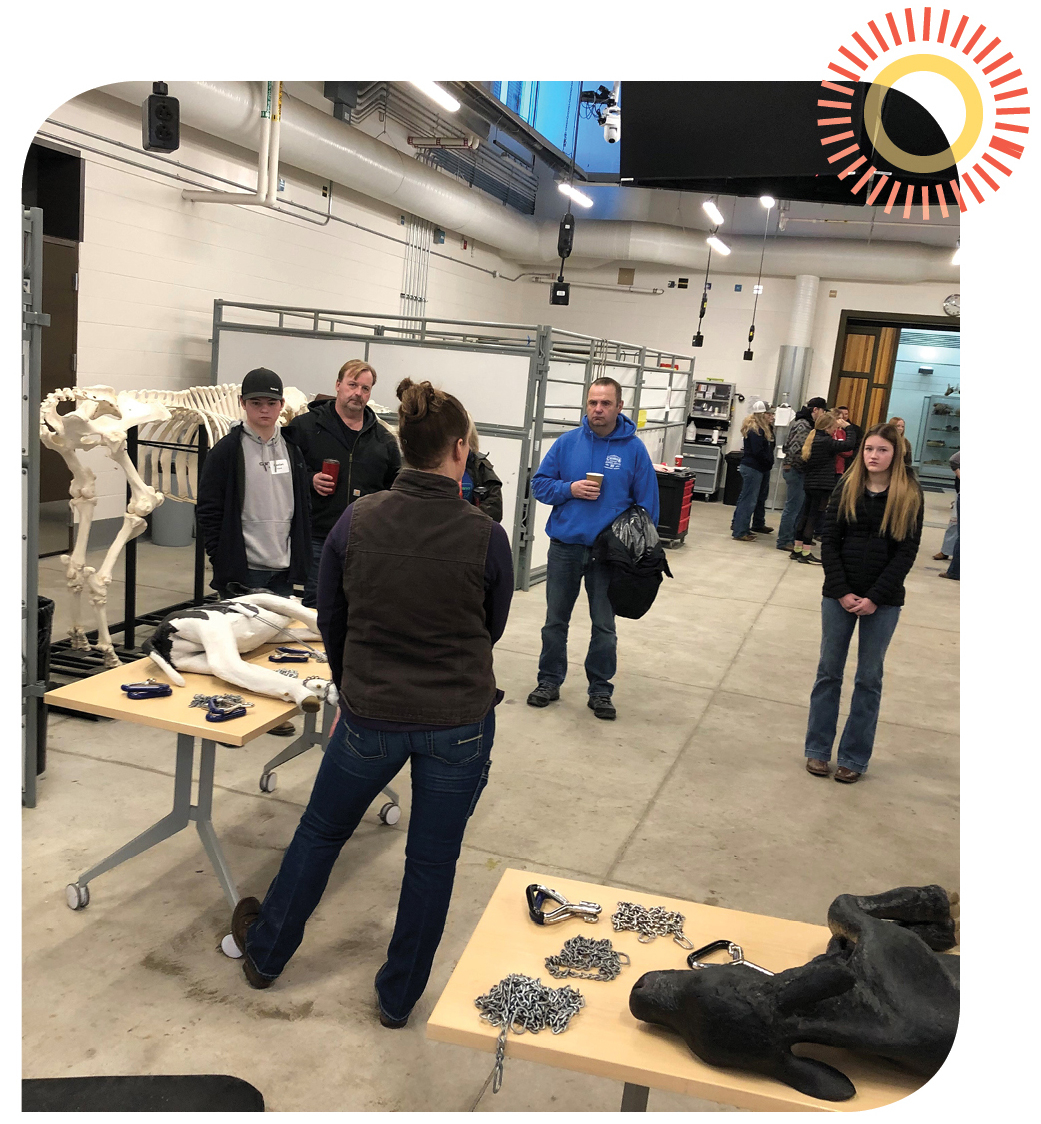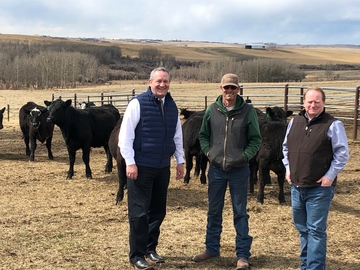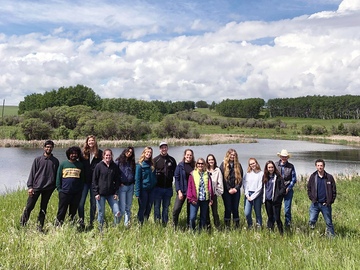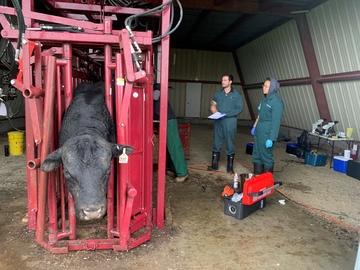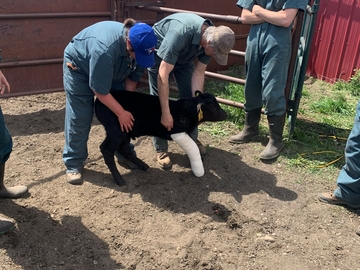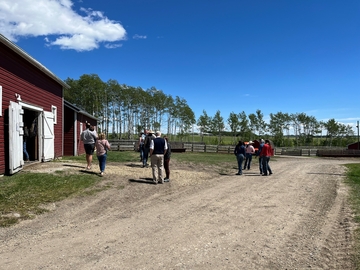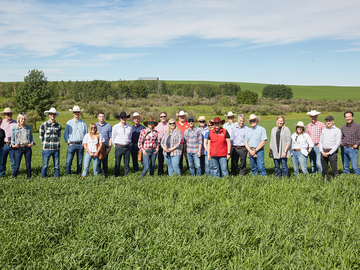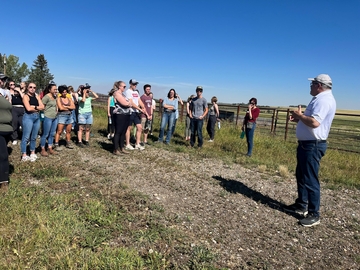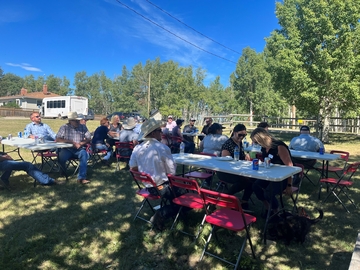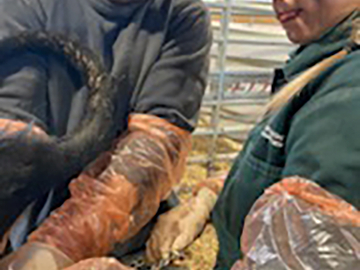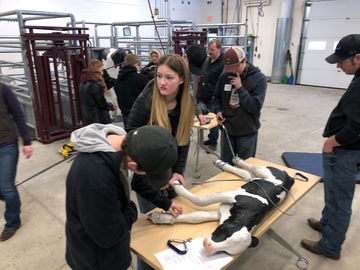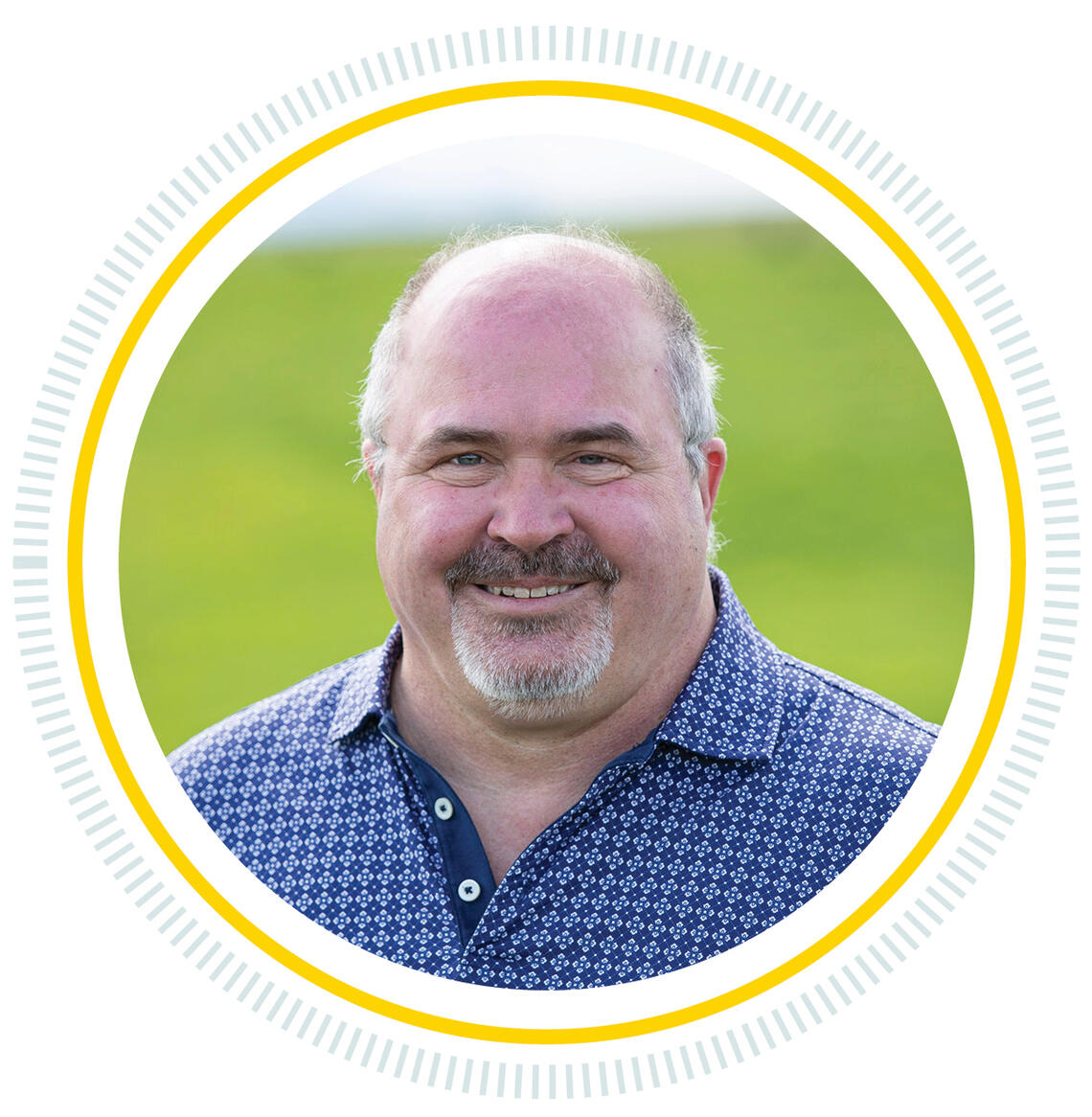
Direct from the Director
Greetings everyone!
It is my great pleasure to share with you our Spring 2023 W.A. Ranches at the University of Calgary newsletter. With a decrease in Covid-19 restrictions, W.A. has started to become a hive of multiple activities, which include new research projects, class visits and new hands-on student experiences. We have launched a new web-based certificate program with at ranch workshops for youth, funded by the Canadian Cattle Foundation. In addition, we have hosted numerous visitors ranging from The Alberta Veterinary Medical Association, industry stakeholders, educators, and leadership from the Calgary Stampede.
In some very exciting news, with the expansion of the University of Calgary Faculty of Veterinary Medicine accepting 100 DVM students in 2024 vs 50 students, funds have become available to improve our teaching facilities at the Ranch. Currently we are developing plans to have temporary structures in place that will allow us to move more experiential learning opportunities out to W.A. by the end of the year.
Please enjoy!
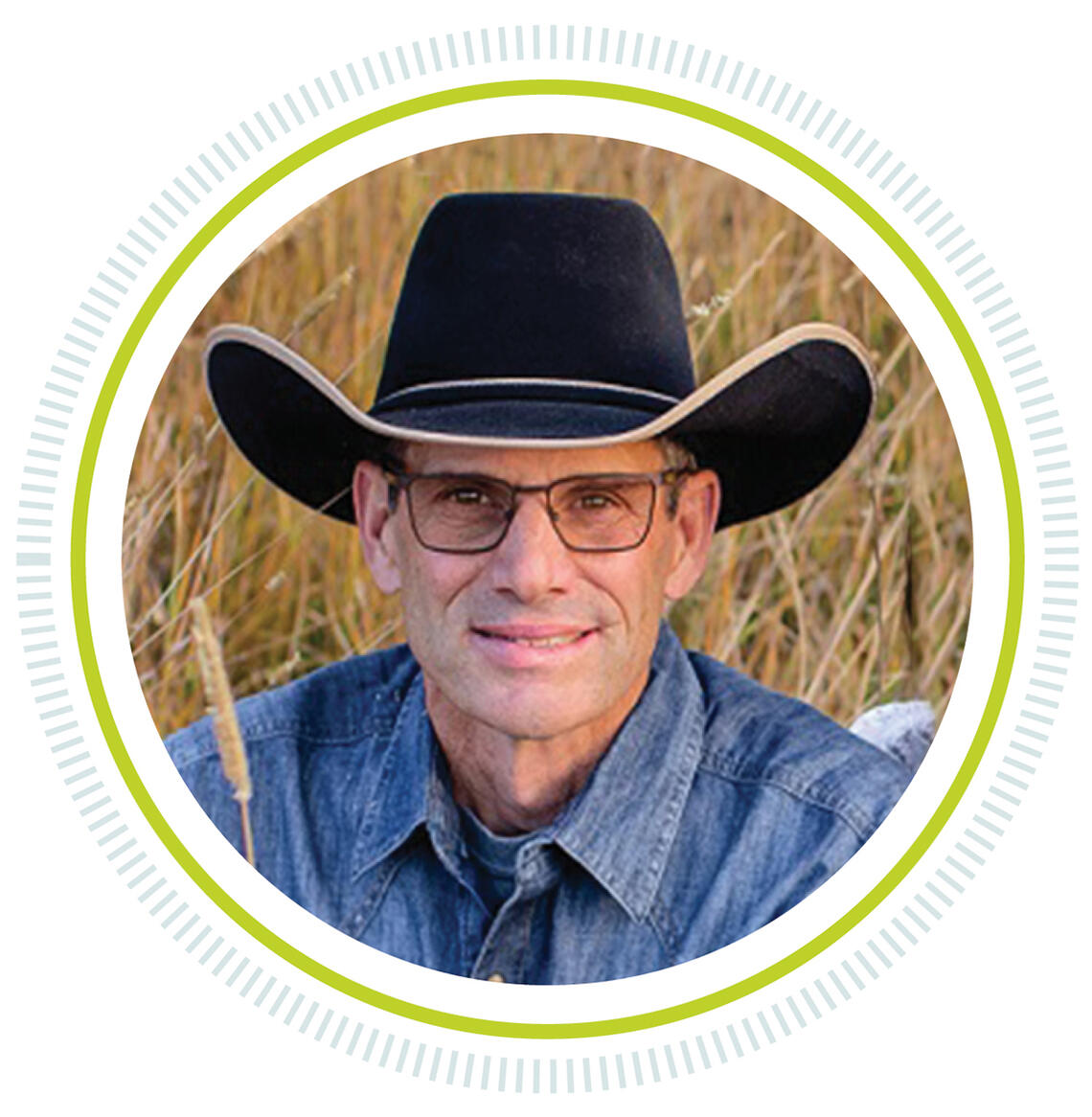
Howdy all from W.A. Ranches
This past winter was a slow and relaxed time of feeding, checking and swath grazing the W.A. cowherd.
The biggest challenge in 2022 was the lack of moisture quality after the month of June. Hay, crops, and pasture were below average, but once again, the W.A. cattle performed well. The fall gather was successful, and our losses were low and the calves we sold, sold well. This was all due to the great work of the full-time and part-time crew.
We are now in the middle of Spring 2023 and over half the herd has calved. We are looking forward to upcoming research projects and student experiences.
Predicting the quality grade of beef cattle using ultrasound technology and AI techniques with Dr. Amin Komeili
Through a multi-center collaboration, a team of researchers from the University of Calgary, Olds College of Agriculture & Technology, Lacombe Research Development Centre, and Dalhousie University is working on developing technologies for improving animal productivity and reducing greenhouse gas emissions. One of their projects is aimed at predicting the quality grade of beef cattle using ultrasound technology and AI techniques.
W.A. Ranches supported the team in a pilot study aiming at developing a prototype demonstration of the product. W.A. Ranches prepared 30 cattle and provided farm personnel to help the team in animal handling.
The results of the pilot study demonstrated that the proposed AI solution for on-farm quality grading is promising. This proof-of-concept result will support the team in their grant applications and ensures the funding agencies that, with some improvements, the adoption of the proposed technology in the beef cattle industry is feasible.

Preventing SARS-CoV2 reservoirs: identifying transmission hotspots between humans, domestic animals, and wildlife
Dr. Mathieu Pruvot, Dr. Shelley Alexander, Dr. Frank van der Meer, and Dr. Sabine Gilch
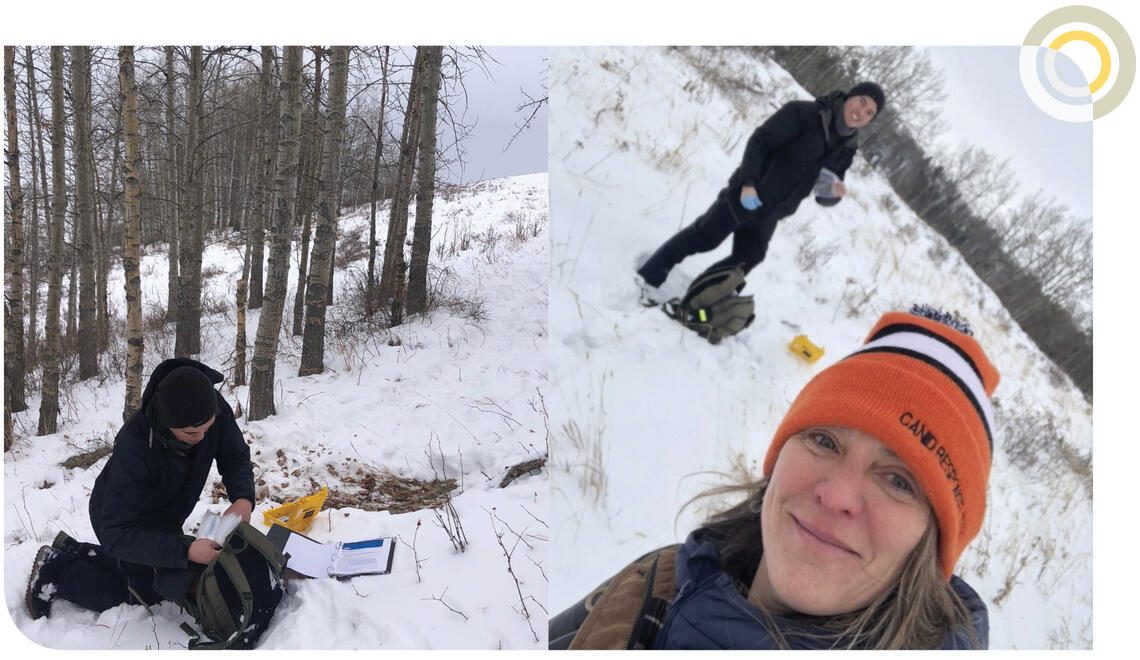
There is a crucial need to understand zoonotic health risks that may arise where wildlife, domestic animals (i.e., dogs, cats, livestock) and humans converge.
The research specifically explored the risk of wildlife becoming a reservoir for SARS-CoV-2 (responsible for COVID-19). Our collaboration is partly funded by a VPR Catalyst Grant, and includes members of the University of Calgary Veterinary Medicine, Arts, Medicine and One Health.
The use of non-invasive methods (i.e., wildlife cameras and fecal sampling) to collect samples in urban, peri-urban, and rural sites were used.
W.A. Ranches offers an unparalleled location to sample where few humans exist, and livestock interact with a complete suite of wildlife (including large carnivores and their prey). Additionally, the location provides a fantastic opportunity for students like Stephen Shikaze (UCVM) to learn wildlife sampling methods as part of our Universities One Health Mentorship program.
Social Resilience in Coyotes across an Urban-Rural Gradient
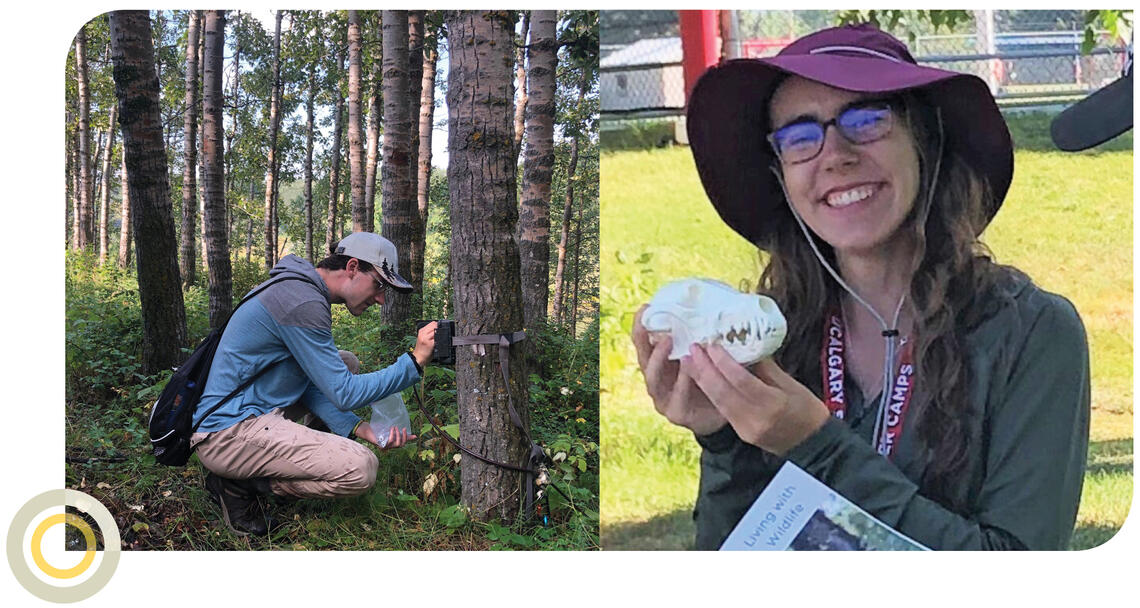
We are studying how coyotes adapt to varying levels of human disturbance, in order to understand what environmental factors directly affect coexistence or conflict with humans.
This non-invasive project combines intensive field monitoring with remote wildlife cameras, tracking, and direct observation.
We document behaviours amongst coyote family members, and relationships to other species. While we study year-round, our focus is the pup-rearing phase, as this is the highest conflict time amongst coyote, pets, livestock, and people. Beyond traditional publications, a key deliverable is an explicit timeline that lists and contextualizes expected behaviours in coyotes to help inform ethical management practices.
The study site/scope also allows one-one training for associated graduate students, building competency in field surveys and wildlife conflict mitigation.
Research results also directly inform the UCalgary Living with Wildlife coexistence and education programs.
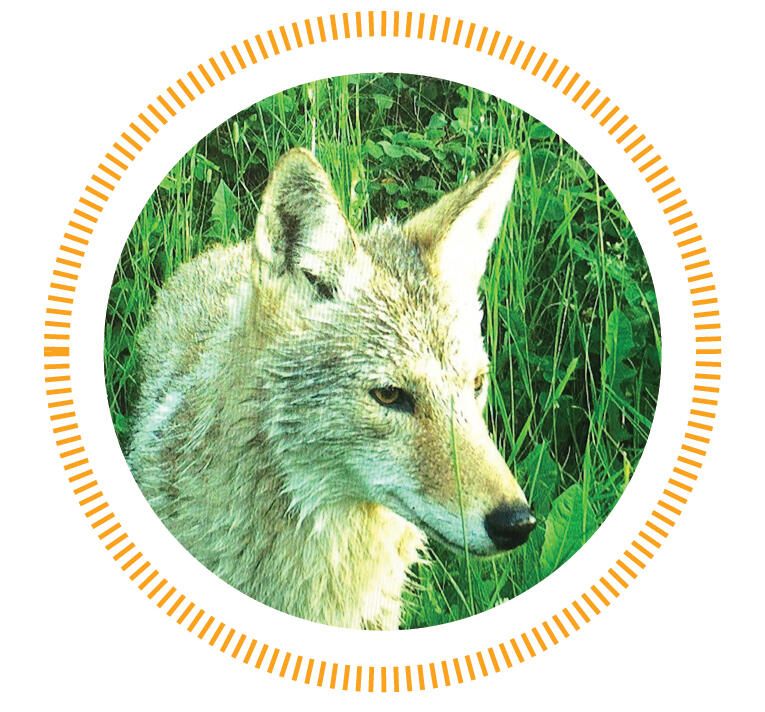
Effects of tactile stimulation and navel dipping on beef calf welfare
Master’s student Victor Brusin, under the supervision of Drs. Maria Camila Ceballos and Claire Windeyer, is conducting a study at the W.A. Ranches using newborn beef calves.
When calves underwent routine processing the day after birth, researchers applied tactile stimulation, by gently massaging the calf’s body, and navel dipping, using the antibacterial substance iodine. This research is studying whether these two interventions affect beef calves’ welfare, using three welfare indicators: behaviour, health, and productivity.
Behaviour tests were performed to assess animals’ fear of humans at spring processing and weaning. For health, researchers are examining whether these interventions had an impact on the risk of treatment for disease and mortality.
Finally, the effects on productivity are being assessed via average daily gain. This project will answer the question of whether tactile stimulation and navel dipping improve calves’ welfare by reducing their fear reaction of humans and resulting in healthier and heavier calves.
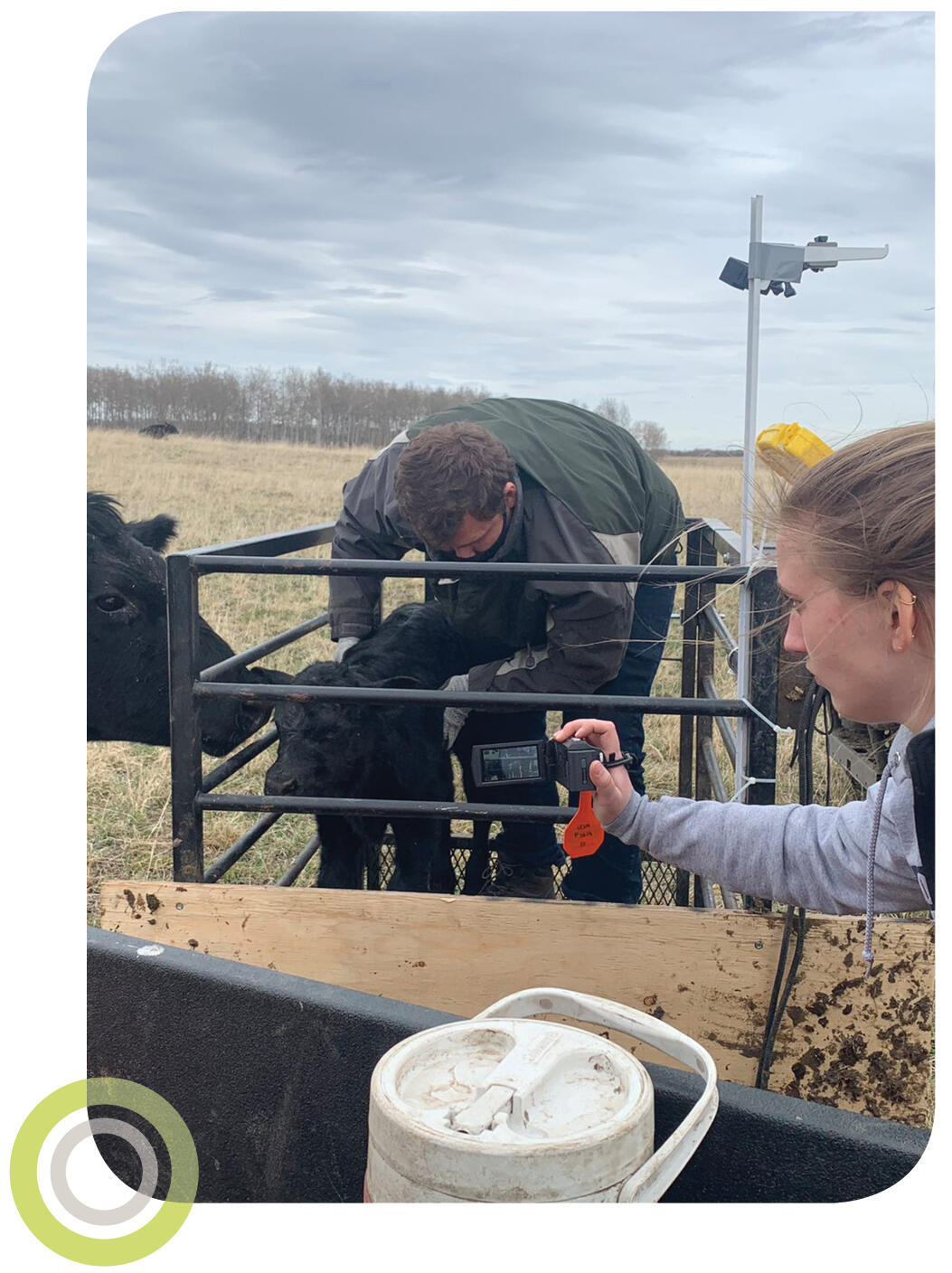
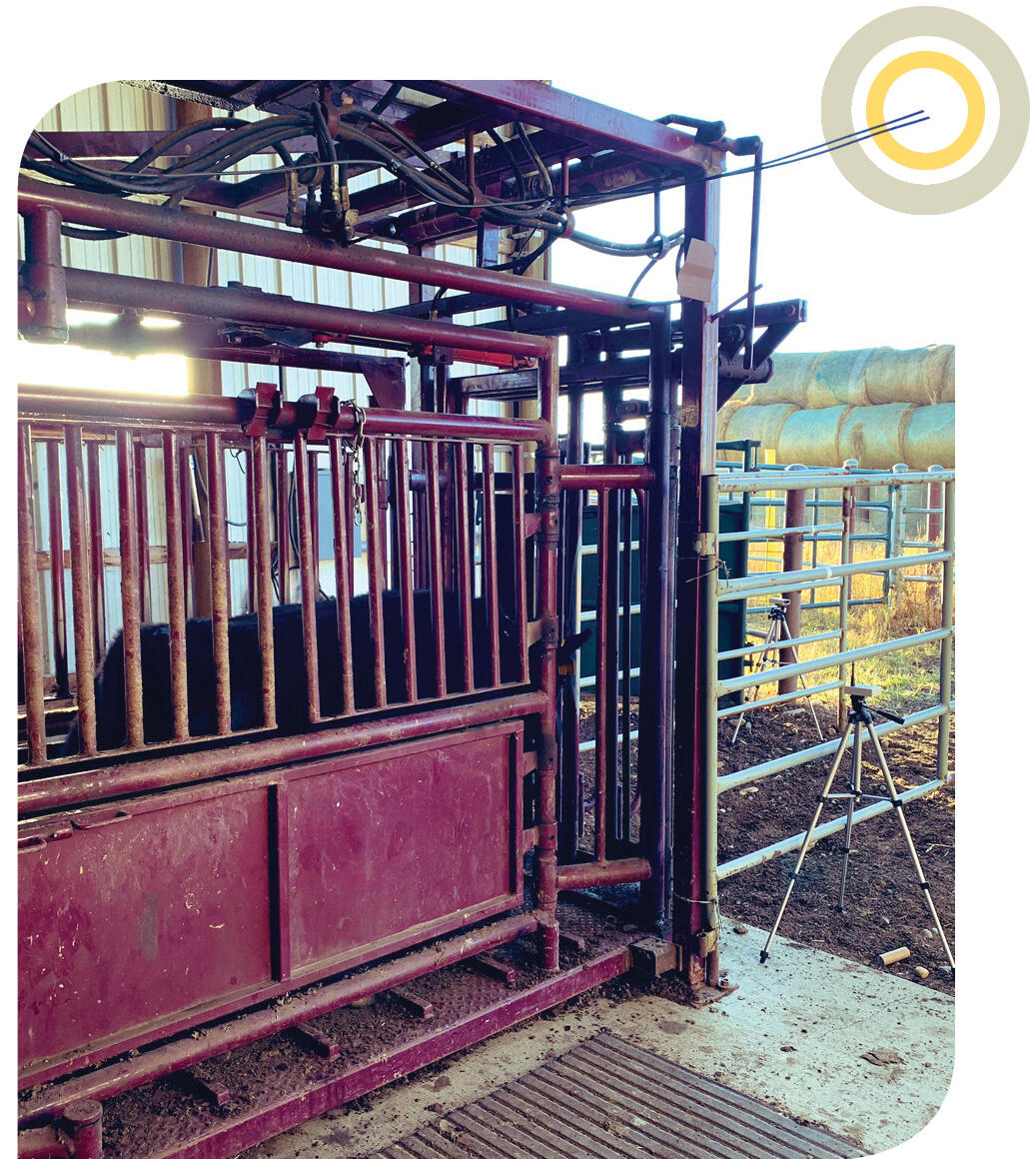
The impact of different weaning methods on dam behaviour, stress, and offspring development
Dr. Karin Orsel, Dr. Ed Pajor and Sanjaya Mijar
In 2020, we ran a great project at W.A. Ranches, focusing on calf health after implementing fence line weaning as a component of preconditioning for 250 steers.
Breakage of the strong bond established between dam and calves during weaning results in behavioral and physiological reactions of stress, that can be detrimental to not just the welfare and health of the calf, but also of the dam.
Based on positive feedback of the W.A. staff on the ease of working dams after weaning, we are now focusing on measuring the different levels of stress experienced by dams after abrupt, fence line or so-called silent wean with nose flaps. Three groups of 30 dams are weaned using one of these methods, and extensive observations of dam behavior and stress measures like cortisol in saliva and feces were taken in fall 2022.
A group of colleagues at the UCVM has an interest to look at the long-term impacts of pre-natal stress on the developing fetus, and also the calves weaned and kept as replacement heifers, as heifers experiencing more stress at weaning may grow slowly and achieve puberty later.
Overall, this study hopes to raise awareness to the ranchers and provide measures of the weaning stress implications on the dam, and in the future on the unborn calf and replacement heifer. We will quantify any negative impacts of weaning stress, but more importantly identify any benefits from weaning practices on health, reproduction and performance of dam, and offspring either exposed to stress in-utero or replacement heifers on foot, ensuring optimized animal welfare and production practices.
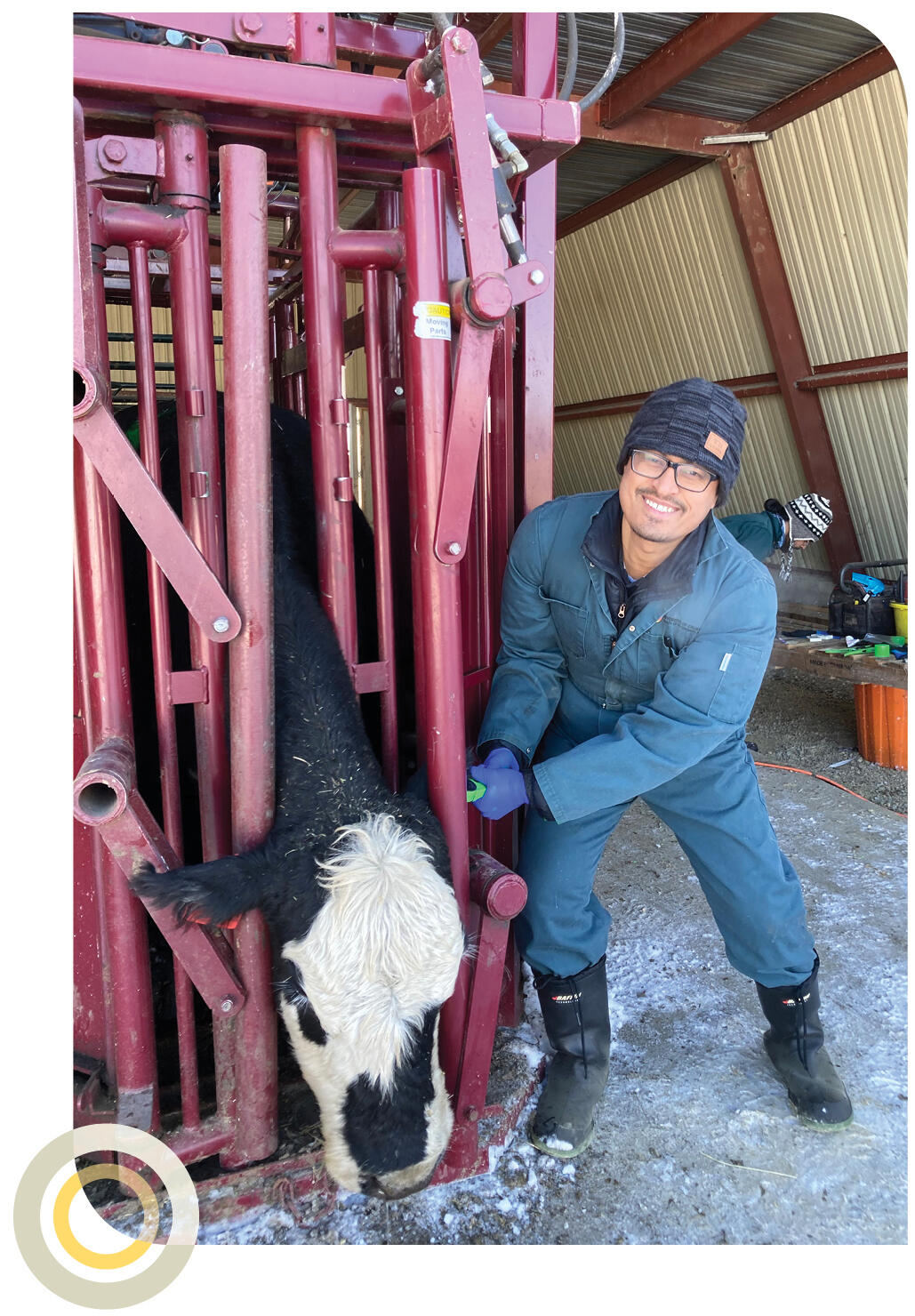
Inside Education Tour in partnership with the Canadian Cattle Association
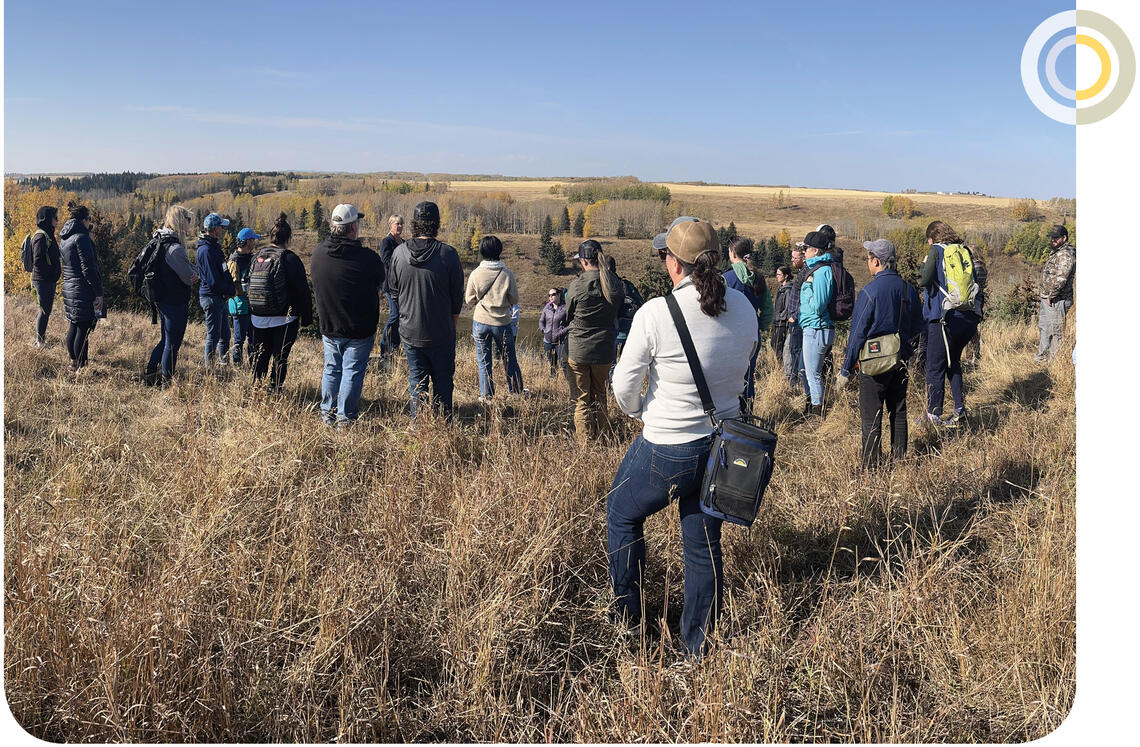
Public and Stakeholder Engagement (PSE), a division of the Canadian Cattle Association (CCA), works to build public trust in the way beef cattle are raised.
The program is launching a new educational online game based on the award-winning film, Guardians of the Grasslands, early this year.
To help with both development and delivery of this resource, PSE has partnered with Inside Education, which creates and distributes learning resources for Alberta classrooms. As part of their professional development teacher tour in October 2022, 30 teachers from across Alberta gathered at W.A. Ranches to learn about the vital role beef cattle play in preserving our endangered native grasslands.
W.A. Ranches was ideal for this purpose – located a short trip from the city limits with easy access to improved grasslands, riparian areas and grazing cattle combined with a core mission of youth education in agriculture.
“The teachers gained a ton of info about grazing, beef production and grassland ecosystems, and I am confident that they will all bring that content into their classrooms in unique and meaningful ways,” said Kathryn Wagner, of Inside Education.
For more information, please contact Amie Peck at pecka@cattle.ca
Tractor Overheating-Engineering Capstone Project
The Motivation Behind The Project
We are Farm Overheating Detection System (FODS). The current problem is that fires are being caused by overheating farm equipment.
For example, the dry wheat on the hot equipment will ignite and cause a loss of expensive farm equipment, loss of income, and the potential for a loss of life. The current solution requires farmers to manually detect hot spots using heat-sensing cameras or thermal sensors and pay special attention to the cleanliness of their equipment. The problem with this solution is that farmers may forget to check their equipment at the end of the day, which leads to hot spots igniting during the night.
The objective of our project is to alert farmers of dangerous heat levels before a fire starts. FODS is partnered with Aurora Wireless Networks (AWN) to implement our thermal detection system with their MLink technology.
Thermal detection sensors will be deployed on farm equipment to detect overheating. Farmers will be notified through a push notification if their farm equipment thermal level exceeds the safe operating threshold. Through our easy-to-use thermal detection system, we plan to reduce the loss of farm equipment due to the ignition of dry material on hot equipment. Our project aims to automate and streamline the heat detection process.
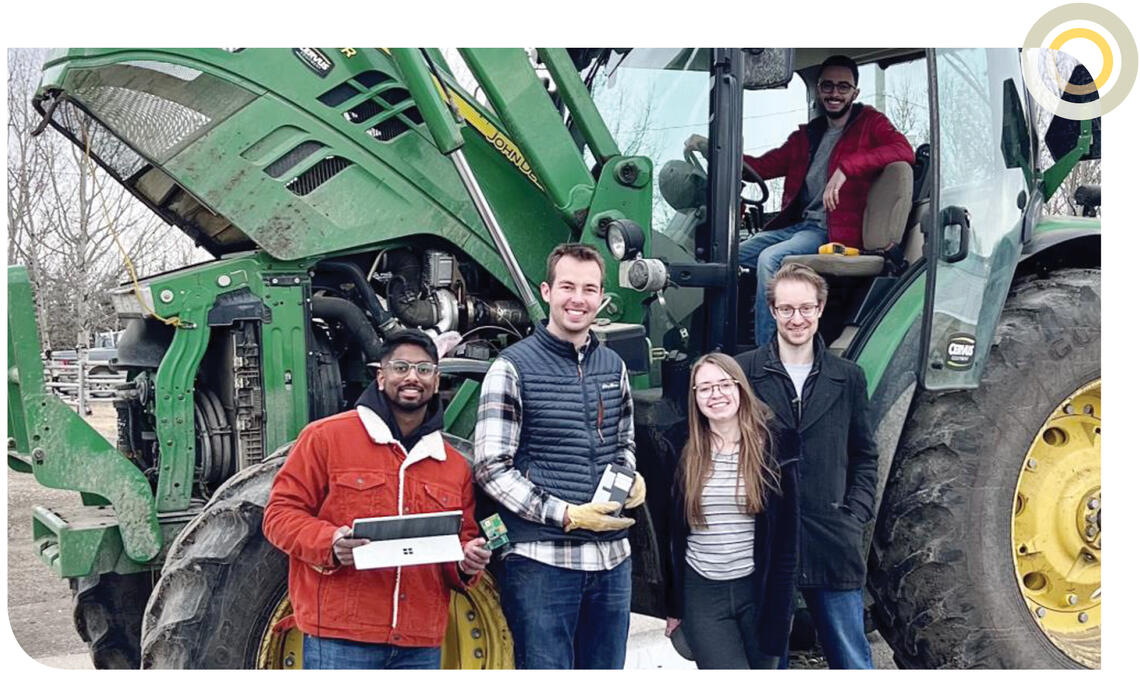
What The Project Is
FODS will be implemented using a network of internet-of-things (IoT) devices based on the MLink system, developed by Aurora Wireless Networks (AWN). A series of MLink endpoints (transmitters) will be integrated on a PCB, alongside thermal sensors for deployment on farm equipment. The thermal sensor module will be directly mounted onto the machines. The thermocouple wire can extend beyond the module to reach the main hot spots of the engine within the farm equipment.
The thermal sensors will communicate with a single base station located in the home of the farmer. The MLink base is the point of communication between the MLink endpoint on the thermal modules. The base will be responsible for polling each endpoint for data at a fixed interval for temperature, battery charge, and GPS data. A simple client app running on a desktop computer will communicate with the MLink base over UART, gather the aggregated data from the base, and upload it to a web server.
A phone application will communicate with the webserver, allowing the user to track the status of all sensors in the network, or be alerted (via a push notification) about any temperatures that exceed user-configurable warning or critical alert thresholds.
Testing & Results
All the field tests were conducted at W.A. Ranches. We wanted to simulate how our prototype would respond in the field under real operating conditions.
We started by carefully installing the thermal sensor modules onto a tractor. A thermal sensor module was installed on the PTO while another was installed on the engine of the tractor.
Advice from Jonny Bennet, Ranch Manager at W.A. Ranches, indicated that these two spots are the hottest running on the tractor during normal operations.
The next step was to measure the accuracy of the temperature readings we received from the thermal sensor module. To do this, Bennet started the tractor, and we began measuring the incoming temperature data. The accuracy of the thermal sensor module was measured by comparing the data to that of a heat sensor gun we borrowed from W.A. Ranches. As a result, the data received from the thermal sensor module was very close to the measurements that the heat sensor gun read.
Finally, we wanted to test the mobile application and the base station connection while the tractor was in motion. The purpose of this test was to ensure that the signal between the thermal sensor module and the base station was not lost as the tractor is moving around on the farm.
Bennet drove the tractor away from where the base station was set up. The connection remained strong and resulted in a successful test. Overall, our capstone project was a success!
Calving Volunteers at UCalgary
Working with UCVM’s Doctor of Veterinary Medicine (DVM) program office, a calving volunteer pilot took place last spring (2022). Four DVM students volunteered their time on weekends from May through June. The program was so well received that we ran it again in May of 2023. Here are three DVM students response:
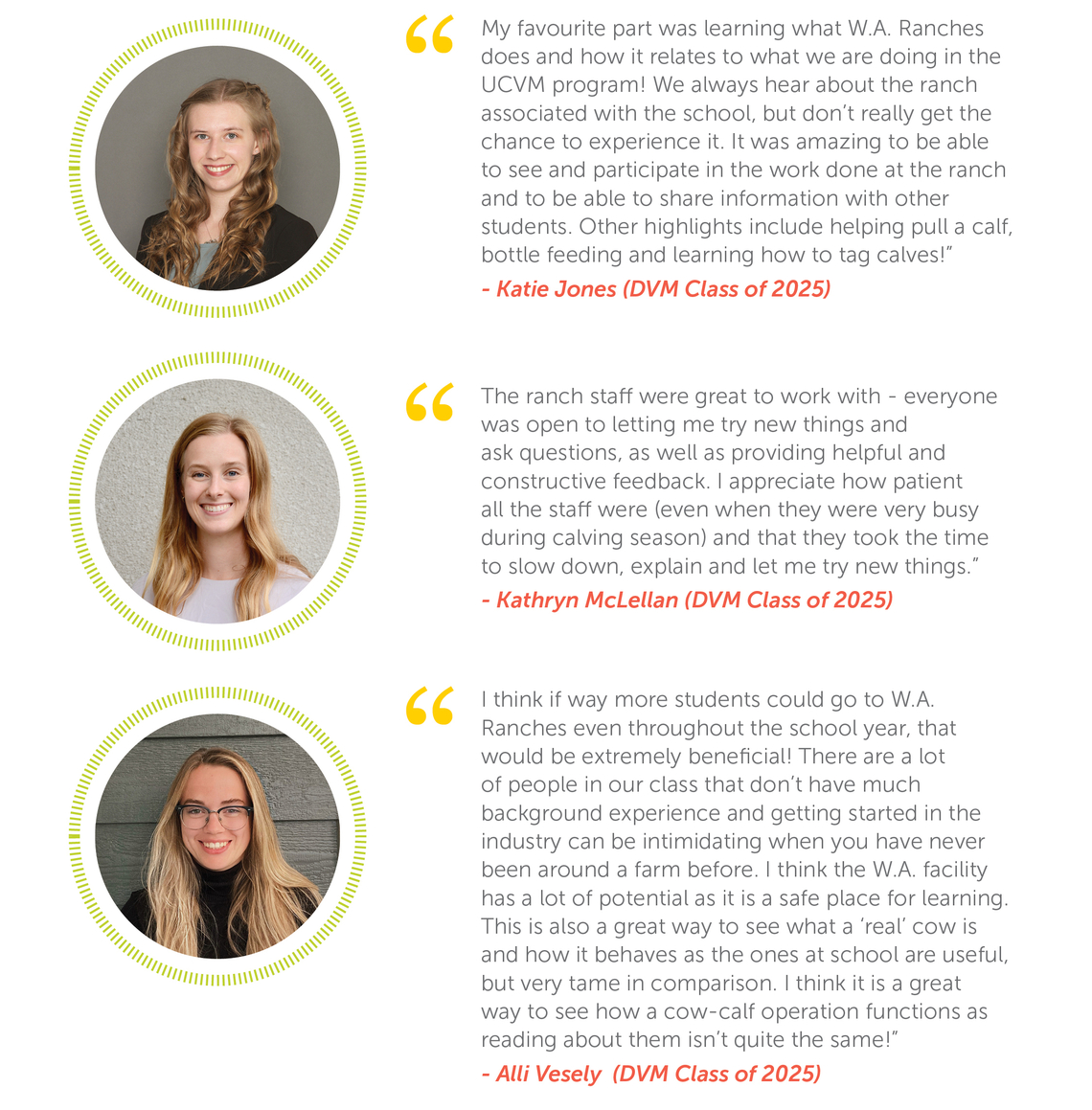
Church Summer Student
Aiden McBean Undergraduate Student at the University of Calgary in Biological Science & Chemistry
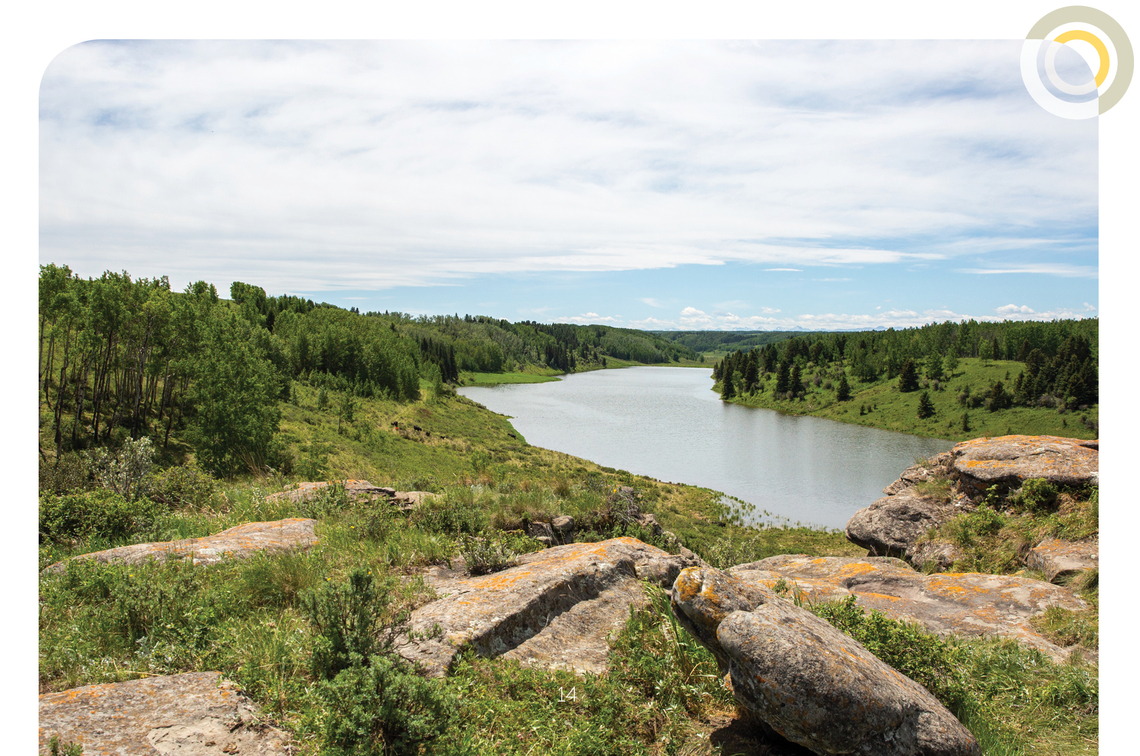
I am thrilled to have the opportunity to work with Dr. Maria Camila Ceballos on Team Beef this summer! Currently I am an undergraduate student here at UCalgary working towards my BSc in Natural Sciences, concentrating in Biology and Chemistry.
Most of my life has been dedicated to my family’s grain and commercial beef cattle farm where I hope to eventually return as a DVM with a specialty in production animal health.
Being a seventh-generation Canadian farmer, I am proud to have been raised having strong beliefs and practices in environmental stewardship supporting the welfare of our herd.
Whether it has been the implementation of our farm’s verification of CRSB Certified Beef and Environmental Farm Plan Plus, or collaborating with Ducks Unlimited on conservation grazing projects, I have always had opportunities to improve our management.
By working with UCVM and W.A. Ranches I hope to gain insight of how their operations approach cattle welfare, and how their handling practices can improve or make changes to farms and ranches like mine across Alberta.
Youth Program Update
The youth program at W.A. Ranches has started to take shape. An online certificate program has been developed with a focus on Beef Cattle Health and Welfare. This non-credit certificate program will be available to all youth and give them a background in major topics of beef health and welfare.
Topics include calving, calf health, cattle behaviour and handling, vaccination best practices and lameness. The certificate is composed of eight online lessons that youth can work through at their own pace. Once they have completed all eight lessons, they will receive their certificate.
We have also started to develop experiential workshops to mirror and enhance the learning youth receive from the online lessons.
At the end of October 2022, we held our first in person Youth Cattle Handling workshop at W.A. Ranches. Thank-you to Dr. Maria Camila Ceballos and her graduate students for volunteering their time to help run the workshop.
We had 25 youth ages 12-18 in attendance for a hands-on workshop on low stress cattle handling. In fact, they all went home with W.A. Ranches low stress handling flags. In January 2023, we held our second workshop for youth at our Spy Hill Campus. The focus of this workshop was on calving and calving health.
Thank-you to Dr. Claire Windeyer and Dr. Jennifer Pearson for volunteering their time and their wonderful hands-on activities using our teaching simulators.
Both days were very successful, and we received great feedback from attendees. We look forward to hosting more workshops and are excited with the level of interest generated for this new program!
